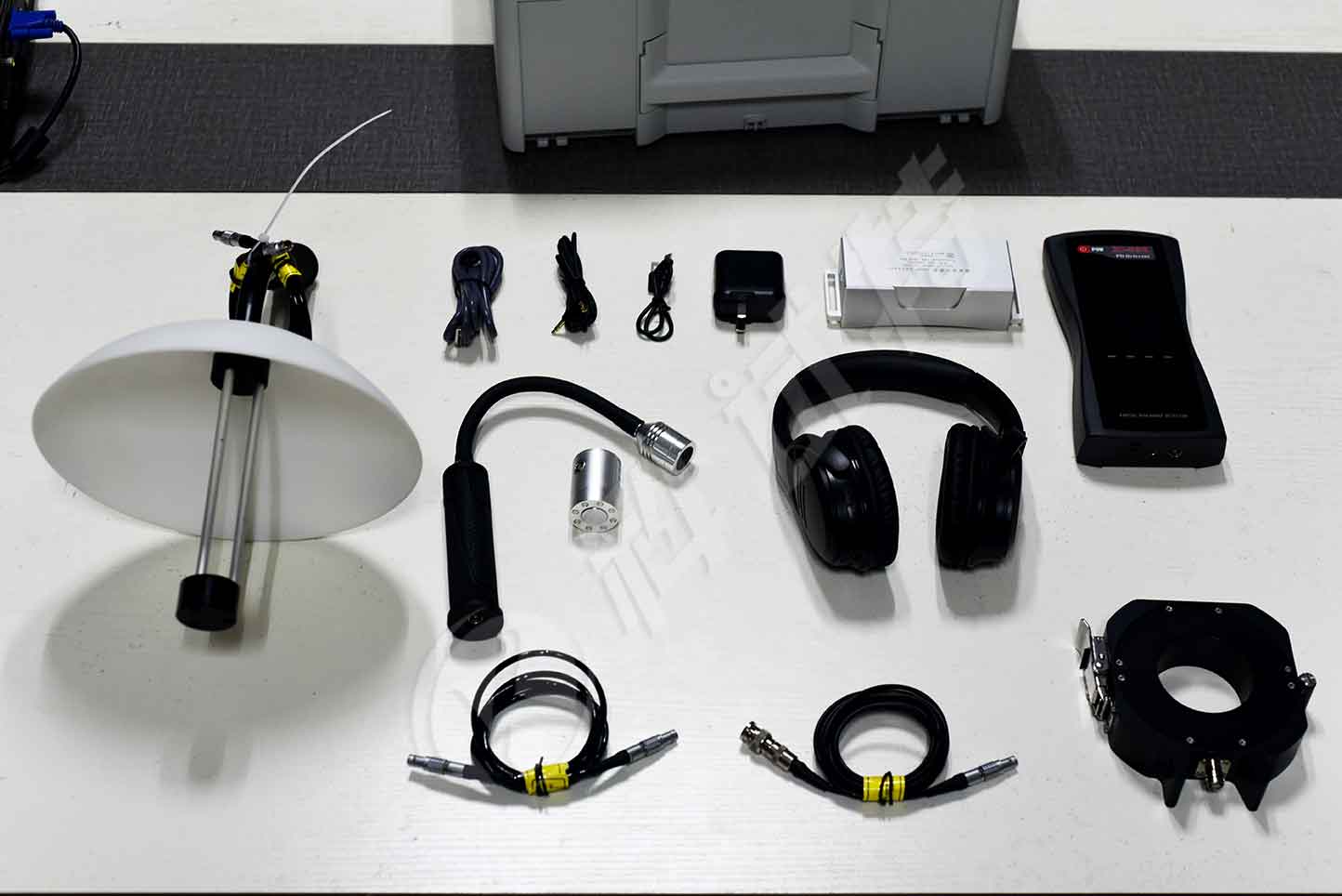Partial discharge detector is a precision instrument used to detect partial discharge phenomena in insulation systems of electrical equipment, widely used in the operation, maintenance, and fault diagnosis of high-voltage power equipment such as transformers, switchgear, GIS, cables, etc. Partial discharge is a phenomenon of partial breakdown of insulating materials under the action of an electric field. Although it does not form a penetrating discharge, it gradually deteriorates the insulation performance and ultimately leads to equipment failure. Therefore, partial discharge detectors play an important role in ensuring the safe operation of power systems.
1. Working principle
Partial discharge detector evaluates the insulation status of equipment by detecting the physical signals generated by partial discharge, such as electrical pulses, ultrasonic waves, electromagnetic waves, optical signals, etc. Common detection methods include:
① Pulse current method (ERA method): The pulse current signal generated by partial discharge is collected by coupling capacitance or detecting impedance, and after amplification and filtering, the amplitude, phase and other characteristics of the discharge pulse are displayed.
② Ultrasonic detection method: using ultrasonic sensors to capture mechanical vibration signals caused by partial discharge, suitable for live detection and with strong anti-interference ability.
③ Ultra high frequency (UHF) detection method: The electromagnetic wave signal generated by partial discharge is received through an ultra-high frequency antenna, which has high sensitivity and anti-interference ability.
④ Transient Earth Voltage (TEV) detection method: detects electromagnetic pulse signals generated on the surface of metal enclosed equipment such as switchgear due to partial discharge.
2. Main functions
① Discharge detection and positioning: Through multi-channel data acquisition and signal analysis, accurate detection and spatial positioning of partial discharge can be achieved.
② Insulation state assessment: Based on information such as discharge amplitude, frequency, and phase, evaluate the degree of insulation degradation of equipment and predict potential faults.
③ Trend analysis and warning: Through long-term monitoring data, analyze the development trend of discharge and provide early warning of equipment failure risks.
④ Fault diagnosis: Combining discharge types (internal discharge, surface discharge, corona discharge, etc.) and discharge characteristics to assist in determining the cause of the fault.
3. Technical features
① High sensitivity: capable of detecting weak discharge signals (such as apparent discharge at the pC level).
② Broadband detection: covering detection frequency bands from low frequency to ultra-high frequency, adapting to different detection needs.
③ Strong anti-interference ability: using digital filtering, time window and other technologies to effectively suppress on-site interference.
④ Portability and ease of use: Handheld or portable design, supporting quick on-site inspection, user-friendly interface.
⑤ Data Management and Analysis: Equipped with professional software that supports data storage, playback, analysis, and report generation.
4. Application scenarios
① High voltage equipment factory test: Check the insulation quality of the equipment to ensure that the product meets the standards.
② Regular inspection and preventive maintenance: Conduct regular inspections of operating equipment to detect early insulation defects.
③ Fault diagnosis and repair: Quickly locate the discharge source and guide maintenance when the equipment is abnormal.
④ Integration of online monitoring system: linked with SCADA system to achieve real-time monitoring of equipment status.
5. Selection suggestions
① Clarify testing requirements: Select appropriate testing methods (such as pulse current method, ultrasonic method, etc.) based on the testing object (such as transformer, switchgear, etc.) and the testing environment (such as laboratory, site).
② Pay attention to technical parameters, including detection sensitivity, frequency band range, anti-interference ability, sampling rate, etc.
③ Consider portability and scalability: Choose portable or online devices according to the usage scenario, and ensure that the instrument supports multi-channel expansion and sensor external connection.
④ Software functionality and compatibility: Prioritize software with data analysis, trend warning, and report generation capabilities, and ensure compatibility with existing systems.
6. Summary
Partial discharge detector is an important tool to ensure the safe operation of power equipment. By detecting partial discharge signals, insulation defects can be detected in a timely manner to avoid equipment failures. Choosing a suitable detector requires comprehensive consideration of detection requirements, technical parameters, portability, and software functionality. In practical applications, scientific selection of detection methods should be based on equipment type, operating environment, and detection targets to ensure the accuracy and reliability of detection results.

The ZC-830 partial discharge detector can be widely used for partial discharge detection in power systems, including high-voltage switchgear, ring main unit, voltage/current transformers, and transformers (including dry-type transformers) GIS、 Insulation state detection of overhead lines, cables and other equipment
Kvtester Electronics Technology Co.,Ltd. is a high-tech enterprise specializing in power testing, testing, research and development, production, and sales of testing equipment. It has been engaged in the electrical testing industry for many years, and its products are of high quality. We welcome customers to come and purchase. Service hotline: 0086-27-81778799, to learn more, visit the official website: www.kvtester.com





